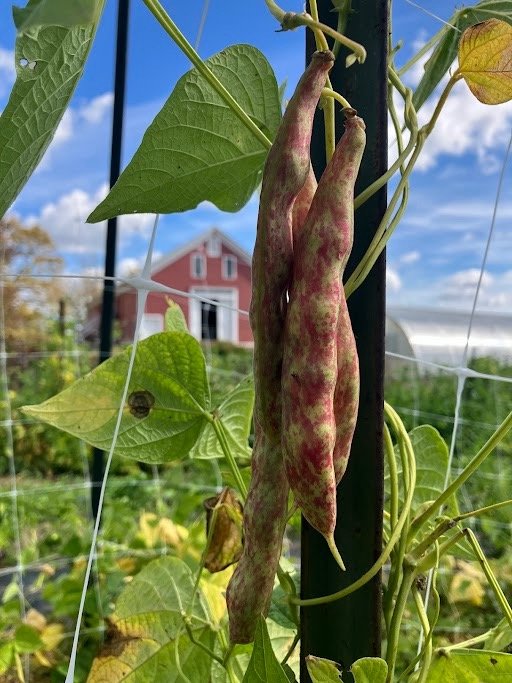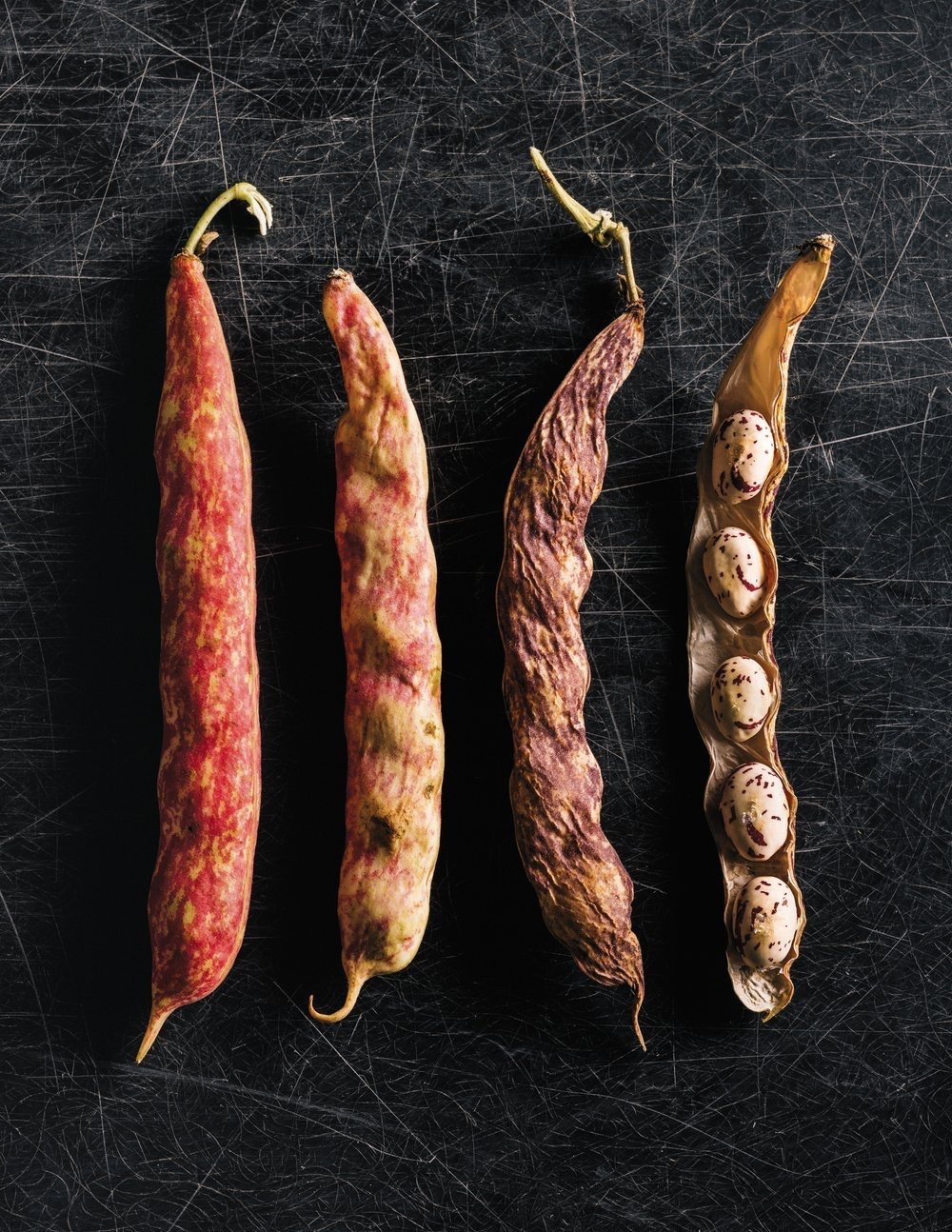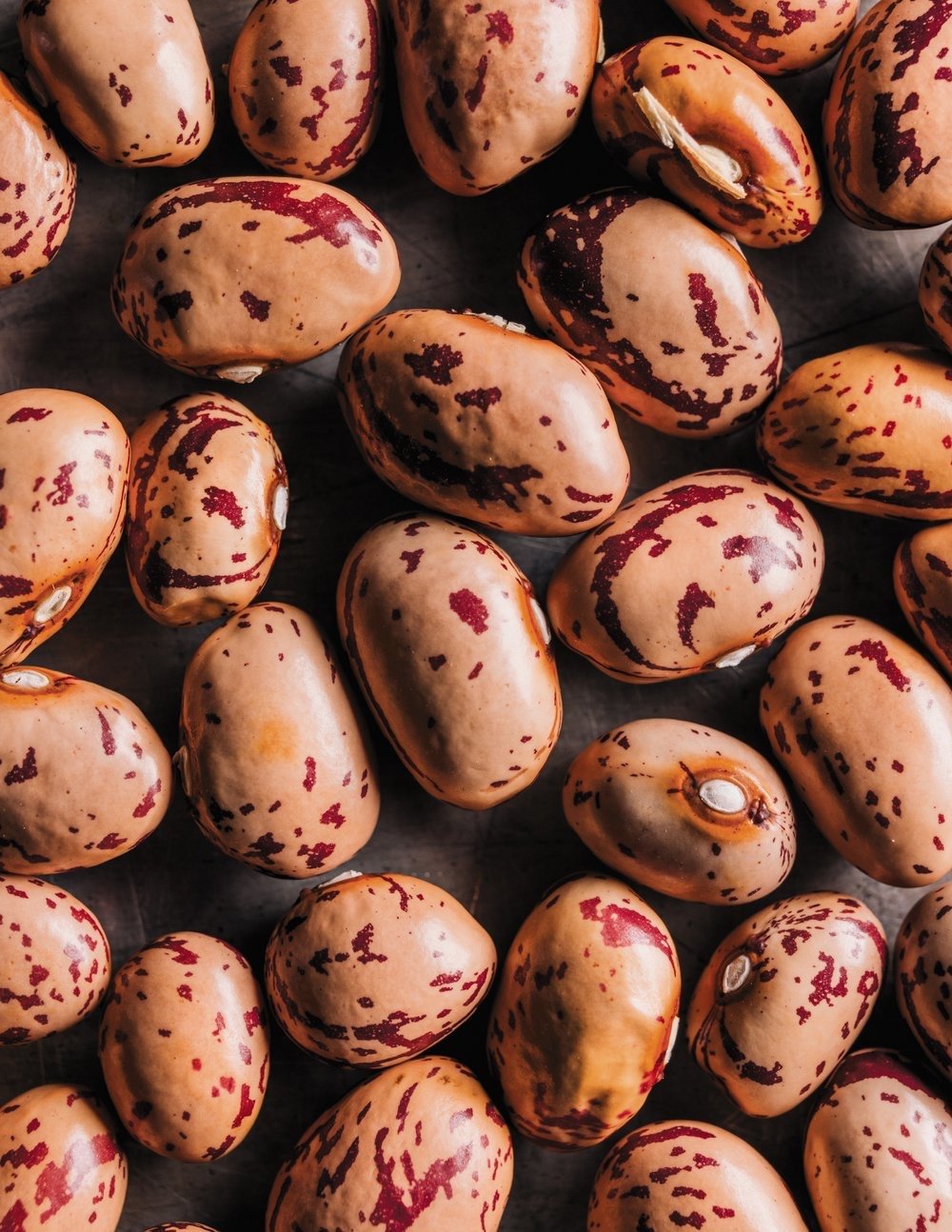



Worcester Mammoth Horticultural Bean
Bean growing in the field from Worcester County Conservation District programming. Glamour shots by Michael Piazza for Edible Boston article on the Worcester Horticultural Bean.
From the Seed Savers Exchange Listing:
Pole, dry. 100 days. Fawn-colored, cranberry-spotted. Most pods contained five or six beans although some nurtured only a couple massive beans. They started out a uniform light green pods, and as they matured, developed pale magenta streaks. Grows 8 feet tall will need trellis or arch. During its heyday, the Worcester-based Ross Bros. seed catalog touted it as, “The Largest Bean, The Longest Keeper, The Brightest Pod, The Most Productive,” even in drought years when seed growers had had mixed results. Donated to SSE in 1981 by bean collector John Withee. Grown in 2022 and 2023 Worcester County again, as part of SSE's RENEW program.
2024 crop grown at Dismas Family Farm in Oakham, Massachusetts.
Germination rate 90%, minimum 20 seeds per packet.
Worcester Mammoth Horticultural Bean
Bean growing in the field from Worcester County Conservation District programming. Glamour shots by Michael Piazza for Edible Boston article on the Worcester Horticultural Bean.
From the Seed Savers Exchange Listing:
Pole, dry. 100 days. Fawn-colored, cranberry-spotted. Most pods contained five or six beans although some nurtured only a couple massive beans. They started out a uniform light green pods, and as they matured, developed pale magenta streaks. Grows 8 feet tall will need trellis or arch. During its heyday, the Worcester-based Ross Bros. seed catalog touted it as, “The Largest Bean, The Longest Keeper, The Brightest Pod, The Most Productive,” even in drought years when seed growers had had mixed results. Donated to SSE in 1981 by bean collector John Withee. Grown in 2022 and 2023 Worcester County again, as part of SSE's RENEW program.
2024 crop grown at Dismas Family Farm in Oakham, Massachusetts.
Germination rate 90%, minimum 20 seeds per packet.





